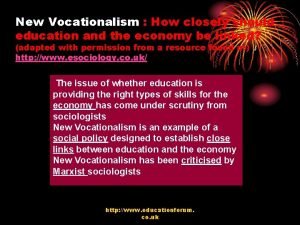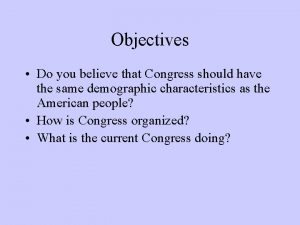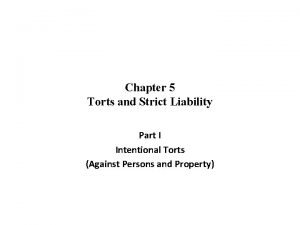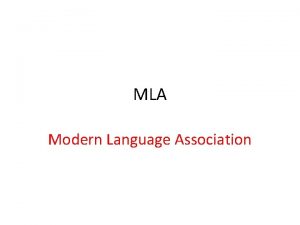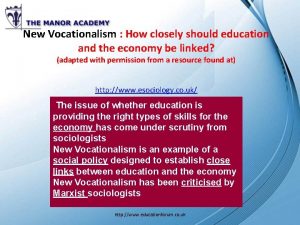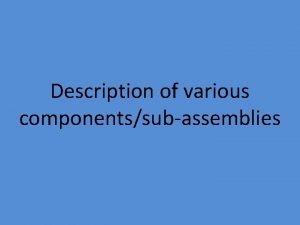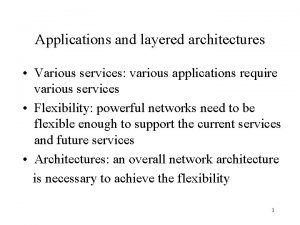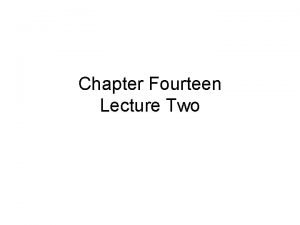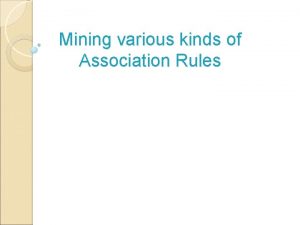New Vocationalism At various times since WW II












- Slides: 12

New Vocationalism At various times since WW II the issue of whether education is providing the right types of skills for the workplace has come under scrutiny

New Vocationalism This argument emerged again strongly in the 1980’s Many 16 -year-olds were ill-equipped for work At higher educational level many were shunning areas like engineering and manufacturing Britain was seen to be at a disadvantage with other countries Vocational qualifications such as BTEC and City & Guilds were seen as lower status qualifications - and were more for post 16 students

New Vocationalism Many felt that education had been in the hands of liberalists for too long and the emphasis on academic qualifications was crippling the economy

New Vocationalism Vocational Education refers to industry-related studies at school and college Vocational training refers to training in work or work-like situations

New Vocationalism Examples of Vocational education GNVQs were introduced – now named Vocational A levels NVQs were introduced usually for those in work to attend on day release etc Curriculum 2000 brought the AS/A 2 levels which are meant to be easily combined with vocational A levels

New Vocationalism Examples of Vocational education But most white MC kids follow traditional academic routes Vocational studies are dominated by WC and ethnic minorities

New Vocationalism Examples of Vocational Training 1983 YTS (Youth Training Scheme) to give school leavers some ‘on the job training’ 1990 YT (Youth Training) replaced YTS –more flexible. 1997 New Deal – all under 25’s receiving benefits were required to take up a subsidised job or voluntary work or full time education/training

New Vocationalism Criticisms Of New Vocationalism Finn 1987 It provides cheap labour Keeps wages low for young workers Reduces politically embarrassing unemployment statistics Removes young from the streets and therefore reduces crime

New Vocationalism Criticisms Of New Vocationalism Phil Cohen (1984) - the real purpose of New Vocationalism is social control. To create good behaviour and discipline rather than work. Young people who refuse to take part are ‘punished’ by having benefits withdrawn Rob Strathdee (2003) says it has continued to reproduce inequality by forcing WC and ethnic minority students onto courses that lead to low paid, low status jobs.

New Vocationalism Criticisms Of New Vocationalism Low Skills The sorts of skills taught are only useful for low pay insecure jobs. Employers abuse the system by treating it as a source of cheap labour Few schemes develop into full time jobs

New Vocationalism Criticisms Of New Vocationalism Inequalities continue NV just carries on the inequalities of the education system NV courses and schemes are heavily populated by WC kids and ethnic minorities Sex stereotyping is reinforced by NV schemes – girls are often channelled into retail and hairdressing

New Right Essay Plan • Introduce basics of New Right belief in Market Forces competition • 1988 Education reform act introduced range of policies designed to improve standards: • Parental choice • League Tables • Ofsted • Sats • National Curriculum to govern what schools taught (standardised for more effective measurement of their efficiency) • Vocationalism to provide skills • For each policy provide evaluation and analysis by criticising the change and saying what implications it had for equality of opportunity in education.
 Vocationalism meaning sociology
Vocationalism meaning sociology Since ancient times nature
Since ancient times nature Since ancient times nature has served man
Since ancient times nature has served man Chechen
Chechen Factors of 168
Factors of 168 Two weeks have passed since the new moon
Two weeks have passed since the new moon New your times
New your times Times new roman h
Times new roman h New york times upfront
New york times upfront New york times v. sullivan
New york times v. sullivan Paula span new york times
Paula span new york times Is mla times new roman
Is mla times new roman Blackout poetry generator
Blackout poetry generator
